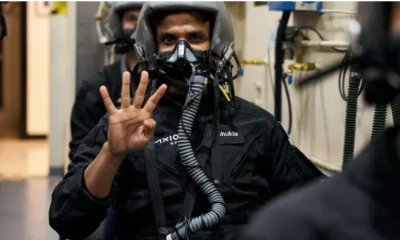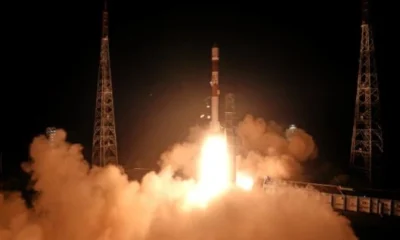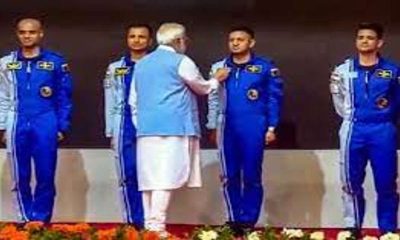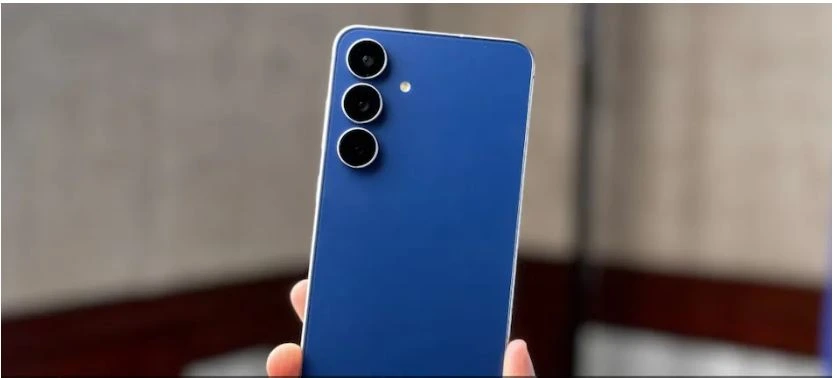[vc_row][vc_column][vc_column_text]The Indian Space Research Organisation (ISRO) on Friday launched its 42nd Polar Satellite Launch Vehicle (PSLV) from the Satish Dhawan Space Centre (SDSC) in Sriharikota. The PSLV-C40 successfully placed 31 satellites, originating from seven countries, in two different orbits in this single mission.
The mission was watched keenly following the failure of ISRO’s August launch when the heat shield of PSLV-C39 did not separate, as a result of which the satellites got trapped inside the heat shield and failed to deploy. It was only the second total failure of the PSLV in nearly 24 years: the PSLV-D1, in its maiden flight, had failed on September 20, 1993.
The C40 was launched from the First Launch Pad of the ISRO’s SDSC Srikarikota High Altitude Range at 9.29 a.m. Its primary payload was the fourth satellite in the advanced remote sensing Cartosat-2 series.[/vc_column_text][vc_raw_html]JTNDYmxvY2txdW90ZSUyMGNsYXNzJTNEJTIydHdpdHRlci10d2VldCUyMiUyMGRhdGEtbGFuZyUzRCUyMmVuJTIyJTNFJTNDcCUyMGxhbmclM0QlMjJlbiUyMiUyMGRpciUzRCUyMmx0ciUyMiUzRVdhdGNoJTIwTElWRSUyMCVGMCU5RiU5MyVCRCUzQSUyMExhdW5jaCUyMG9mJTIwJTNDYSUyMGhyZWYlM0QlMjJodHRwcyUzQSUyRiUyRnR3aXR0ZXIuY29tJTJGaGFzaHRhZyUyRklTUk8lM0ZzcmMlM0RoYXNoJTI2YW1wJTNCcmVmX3NyYyUzRHR3c3JjJTI1NUV0ZnclMjIlM0UlMjNJU1JPJTNDJTJGYSUzRSUyNiUyMzM5JTNCcyUyMDEwMHRoJTIwc2F0ZWxsaXRlJTJDJTIwJTNDYSUyMGhyZWYlM0QlMjJodHRwcyUzQSUyRiUyRnR3aXR0ZXIuY29tJTJGaGFzaHRhZyUyRlBTTFZDNDAlM0ZzcmMlM0RoYXNoJTI2YW1wJTNCcmVmX3NyYyUzRHR3c3JjJTI1NUV0ZnclMjIlM0UlMjNQU0xWQzQwJTNDJTJGYSUzRSUyMCUyRiUyMCUzQ2ElMjBocmVmJTNEJTIyaHR0cHMlM0ElMkYlMkZ0d2l0dGVyLmNvbSUyRmhhc2h0YWclMkZDYXJ0b3NhdCUzRnNyYyUzRGhhc2glMjZhbXAlM0JyZWZfc3JjJTNEdHdzcmMlMjU1RXRmdyUyMiUzRSUyM0NhcnRvc2F0JTNDJTJGYSUzRS0yJTIwU2VyaWVzJTIwU2F0ZWxsaXRlJTIwJUYwJTlGJTlCJUIwJTIwLSUyMCUyMGZyb20lMjAlM0NhJTIwaHJlZiUzRCUyMmh0dHBzJTNBJTJGJTJGdHdpdHRlci5jb20lMkZoYXNodGFnJTJGU3JpaGFyaWtvdGElM0ZzcmMlM0RoYXNoJTI2YW1wJTNCcmVmX3NyYyUzRHR3c3JjJTI1NUV0ZnclMjIlM0UlMjNTcmloYXJpa290YSUzQyUyRmElM0UlMjAlM0NhJTIwaHJlZiUzRCUyMmh0dHBzJTNBJTJGJTJGdC5jbyUyRkNLOGVwOWVqM24lMjIlM0VodHRwcyUzQSUyRiUyRnQuY28lMkZDSzhlcDllajNuJTNDJTJGYSUzRSUzQyUyRnAlM0UlMjZtZGFzaCUzQiUyMFBJQiUyMEluZGlhJTIwJTI4JTQwUElCX0luZGlhJTI5JTIwJTNDYSUyMGhyZWYlM0QlMjJodHRwcyUzQSUyRiUyRnR3aXR0ZXIuY29tJTJGUElCX0luZGlhJTJGc3RhdHVzJTJGOTUxNjYyMTUxOTAyNTQzODczJTNGcmVmX3NyYyUzRHR3c3JjJTI1NUV0ZnclMjIlM0VKYW51YXJ5JTIwMTIlMkMlMjAyMDE4JTNDJTJGYSUzRSUzQyUyRmJsb2NrcXVvdGUlM0UlMEElM0NzY3JpcHQlMjBhc3luYyUyMHNyYyUzRCUyMmh0dHBzJTNBJTJGJTJGcGxhdGZvcm0udHdpdHRlci5jb20lMkZ3aWRnZXRzLmpzJTIyJTIwY2hhcnNldCUzRCUyMnV0Zi04JTIyJTNFJTNDJTJGc2NyaXB0JTNFJTBB[/vc_raw_html][vc_column_text]The Cartosat-2, whose imagery will be used to develop various land and geographical information system applications, weighs 710 kg and was to be placed in a circular polar sun synchronous orbit 505 km from Earth. The satellite’s design life is five years. The 30 co-passenger satellites together weigh 613 kg and the total weight of all the 31 satellites carried onboard was about 1,323 kg.
Of greater interest were the two other Indian satellites in the C40’s payload. Seen as technology demonstrators, they signify progress towards miniaturisation. The microsatellite is of the 100 kg class. “This is a technology demonstrator and the forerunner for future satellites of this series,” said ISRO.
The nanosatellite, named Indian Nano Satellite – 1C, is the third in its series; its predecessors were part of the PSLV-C37 launch of February 2017. The INS-1C, whose mission life is six months, carries the Miniature Multispectral Technology Demonstration payload from the Space Applications Centre. “With a capability to carry up to 3 kg of payload and a total satellite mass of 11 kg, it offers immense opportunities for future use,” said ISRO.
The other 28 satellites came from six countries and were launched as part of deals made by ISRO’s commercial arm Antrix Corporation Limited. Three of them were microsatellites while 25 were nanosatellites. There were 19 satellites from the United States and five from South Korea; UK, France, Canada and Finland had a satellite each within PSLV-C40.
The mission also marked the successful demonstration of the multi-burn technology, which ISRO takes lot of pride-in, as representatives from six foreign countries – Canada, Finland, France, Republic of Korea, UK and USA – looked on from the VIP box. While 30 of 31 satellites carried by PSLV were first launched into a 505 km polar Sun Synchronous Orbit (SSO), the Microsat built by ISRO was placed in a 359 km polar SSO after bringing down the orbital height by reigniting the fourth stage of PSLV twice. This complex technology offers distinctive advantage to India in attracting foreign clientele.
The launch also signified the national space agency’s foray into dynamic micro and nano satellite manufacturing market, reported The New Indian Express (TNIE). Quoting Tapan Misra, Director, Space Applications Centre (SAC), it said, “Having a large number of small satellites, instead of a few heavy ones, makes sense as they could cover the same piece of ground more frequently – say, every 15 minutes – for collecting imagery. This could spell a revolution in the way satellites are used – whether it is for helping fishermen to identify catches, keeping track of crops or detecting natural disasters like floods and earthquakes. Similarly, increasing miniaturisation in electronics makes redundant the use of heavy satellites for telecommunications and remote sensing. Smaller satellites deliver better coverage at a fraction of the cost.”
He said ISRO was looking at a major shift. “Our aim is to build heavier launchers and lighter payloads, which give us distinctive advantage in carrying capacity.” The launch is one of the initial steps towards achieving this goal.”[/vc_column_text][vc_column_text css=”.vc_custom_1515743965381{padding-top: 10px !important;padding-right: 10px !important;padding-bottom: 10px !important;padding-left: 10px !important;background-color: #cccccc !important;border-radius: 10px !important;}”]Ten big achievements of ISRO (compiled by HT):
Launching 104 satellites in a single mission, 2017: On February 15, 2017, ISRO garnered international attention when it launched 104 satellites using the PSLV and successfully managed to put these satellites into their desired orbit in one go. 101 were foreign satellites out of the 104 launched. It also included the Cartostat-2 series, India’s earth observation satellite.
Indian Regional Navigation Satellite System, 2016: The seven-satellite system created India’s very own satellite navigation system that could potentially offer services like terrestrial and marine navigation, disaster management, vehicle tracking and fleet management, navigation aide for hikers and travellers, visual and voice navigation for drivers. The launch of the 7th navigation satellite brought India much closer to the ‘GPS club’. Experts said an Indian-owned system will be particularly useful in times of war to gain positional accuracy.
Launching 20 satellites, 2016: Before it made the 104 satellite record, in June, ISRO launched 20 satellites in one mission, a personal best for the space agency. Apart from Isro’s own satellites and those built by university students in the country, the mission carried satellites from the US, Canada, Germany and Indonesia.
Reusable Launch Vehicle, 2016: In May, Isro successfully tested the Reusable Launch Vehicle — Technology Demonstrator (RLV-TD) that was built on a budget of Rs 95 crore. The winged flight vehicle — dubbed as India’s space shuttle — that glided back onto a virtual runway in the Bay of Bengal in a 10-minute mission was the first stage of a fully re-usable vehicle. A reusable launch vehicle can bring down launch costs by up to ten times.
Mangalyaan, 2014: India joined an exclusive global club when it successfully launched the Mars Orbiter Mission on a shoestring budget that was at least 10 times lower than a similar project by the US. Only the United States, Russia and Europe have previously sent missions to Mars, but what made India’s achievement stand out was that it succeeded on its first attempt, which even the Americans and the Soviets could not.
Chandrayaan, 2008: India’s first unmanned lunar probe was launched almost a decade ago and was a landmark in India’s space mission. ISRO joined an elite list of just six space organisations to send an orbiter to the moon. A Tricolour was hoisted on the moon but Isro lost contact with Chandrayaan soon after.
Polar Satellite Launch Vehicle, 1993: It was developed in the 1990s and has become the Indian space mission’s most reliable workhorse. The PSLV carried out its first mission in 1993 but its first successful outing was the next year. For the next 20 years, it launched various satellites for historic missions such as the Chandrayaan and Mangalyaan. PSLV remains a favourite among various organisations as a launch service provider and has launched over 40 satellites for 19 countries.
Indian National Satellite System (INSAT), 1983: Launched by ISRO, INSAT is a series of multi-purpose geostationary satellites. It helped with telecommunications, broadcasting, meteorology, and search and rescue operations. The satellites built a communication system all across Asia Pacific region. There are nine working satellites in the group.
Aryabhatta, 1975: The Aryabhata spacecraft that was named after the famous Indian astronomer was the country’s first satellite. It marked a milestone in India’s space programme because it was completely designed in the country and launched from a Russian facility in 1975. Known better by its popular name Insat, the system is a network of satellites that facilitates communications and broadcasting across the south Asian region. The first satellite in the series was placed into orbit in 1983 and ushered in a revolution in India’s television and radio broadcasting, telecommunications and meteorological sectors. Nine satellites are operational.[/vc_column_text][/vc_column][/vc_row]


 India News13 hours ago
India News13 hours ago
 India News11 hours ago
India News11 hours ago
 India News11 hours ago
India News11 hours ago
 Latest world news5 hours ago
Latest world news5 hours ago
 Latest world news13 hours ago
Latest world news13 hours ago
 Entertainment5 hours ago
Entertainment5 hours ago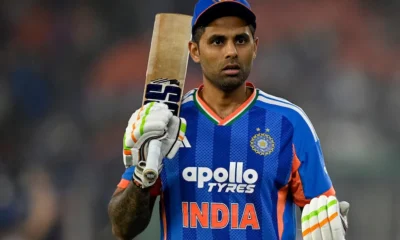
 Cricket news4 hours ago
Cricket news4 hours ago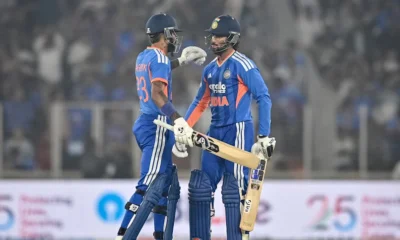
 Cricket news3 hours ago
Cricket news3 hours ago
